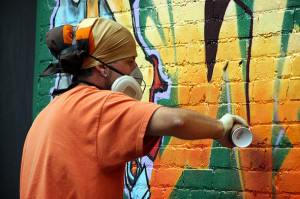Addiction can have a devastating effect on both individuals and communities, not only causing physical and mental health issues, but also wreaking havoc on interpersonal relationships and financial stability. In response, more and more individuals and communities are joining forces in an effort to help those struggling with addiction and to address the issue more comprehensively.

Individual efforts, such as sharing recovery stories and providing compassionate support for those starting their own or continuing on their recovery journey, are being taken in an effort to help individuals with addiction directly. Support groups, online or in-person meetings, and resources produced by those with personal experience are being made available to those who need it in an effort to offer support, inspire hope, and instill the confidence to take that first step towards the journey of addiction treatment and recovery. In addition, families, friends, and professionals are working together to identify signs of addiction, encourage proper diagnosis and treatment, and create an environment of understanding and open communication in order to better support those in need.
On the community level, organizations and initiatives are being created to address the overarching issue of addiction. One such effort is the newly formed National Prevention Coalition, founded to advocate for the prevention and early intervention of addiction. The organization focuses on programs and approaches that shift the focus to early intervention and prevention, while providing resources, research, and support towards the development of comprehensive strategies to address the issue.
Sean Fairbairn, the founder and President of the National Prevention Coalition, has an inspiring vision for the future of addiction prevention:
“We must strive for a collective effort dedicated to seeking out and championing the range of solutions that will enable us to create a strong, unified voice against addiction. We must come together, in a spirit of mutual cooperation and understanding, and embrace the power of collective action to move this issue onto the global stage so that it can finally be seen and heard for what it is: a public health crisis of epidemic proportions.”
Indeed, Fairbairn’s vision appears to be taking hold and the concept of a collaborative, collective effort against addiction is gaining ground. From parents advocating for proper education and public health initiatives, to organizations providing access to resources and treatment, to individuals sharing their stories of recovery, this unified voice is growing ever louder with its important message – together, we can fight addiction.
Though addiction is an issue that no community or individual should have to face alone, it is a complex issue with no simple solution. Yet, together, we can strive to support those struggling with addiction, provide access to resources and treatment, and create an environment of understanding and compassion that will allow for meaningful and lasting change. A collective, unified effort towards the prevention and treatment of addiction is a powerful one, and with this, we can band together now against addiction.







